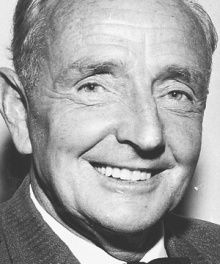Burt Munro
| Burt Munro | |
|---|---|
 |
|
| Born |
Herbert James Munro ('Burt') 25 March 1899 Invercargill, New Zealand |
| Died | 6 January 1978 (aged 78) Invercargill, New Zealand |
| Resting place | Invercargill, New Zealand |
| Nationality | New Zealand |
| Occupation | Carpenter New Zealand Home Guard Speedway rider Motorcycle salesman Mechanic Land Speed record holder |
| Known for | Land Speed record holder |
| Spouse(s) | Florence Beryl Martyn (m. 1927; div. 1947) |
| Children | 4 |
Herbert James "Burt" Munro (Bert in his youth; 25 March 1899 – 6 January 1978) was a New Zealand motorcycle racer, famous for setting an under-1,000 cc world record, at Bonneville, 26 August 1967. This record still stands; Munro was 68 and was riding a 47-year-old machine when he set his last record.
Working from his home in Invercargill, he worked for 20 years to highly modify the 1920 that he had bought that same year. Munro set his first New Zealand speed record in 1938 and later set seven more. He travelled to compete at the Bonneville Salt Flats, attempting to set world speed records. During his ten visits to the salt flats, he set three speed records, one of which still stands.
His efforts, and success, are the basis of the motion picture The World's Fastest Indian (2005), starring Anthony Hopkins, and an earlier 1971 short documentary film Burt Munro: Offerings to the God of Speed, both directed by Roger Donaldson.
Munro was born in 1899 in Invercargill. His twin sister died at birth and Munro grew up on a farm in Edendale, east of Invercargill.
Munro's interest in speed began at an early age, riding the family's fastest horse across the farm, despite the complaints of his father. Trips via train to the port at Invercargill were a rare source of excitement, and the arrival of cars, motorcycles and aircraft added to Burt's eagerness to join the world outside of his farm. As Munro's family discouraged his endeavours outside of farm life, he became constantly bored with daily routine. At the outbreak of the First World War, he intended to go to war as soon as he was old enough, for a chance to see the world.
Munro remained on the family farm until the end of the First World War, when his father sold the farm. At that time, Munro worked on the Otira Tunnel construction until recalled to work with his father on a newly purchased farm. After this he became a professional speedway rider, but returned home to the family farm at the start of the Great Depression. Finding work as a motorcycle salesman and mechanic, he raced motorcycles and rose to the top of the New Zealand motorcycle scene, racing on Oreti Beach and later in Melbourne, Australia.
...
Wikipedia
